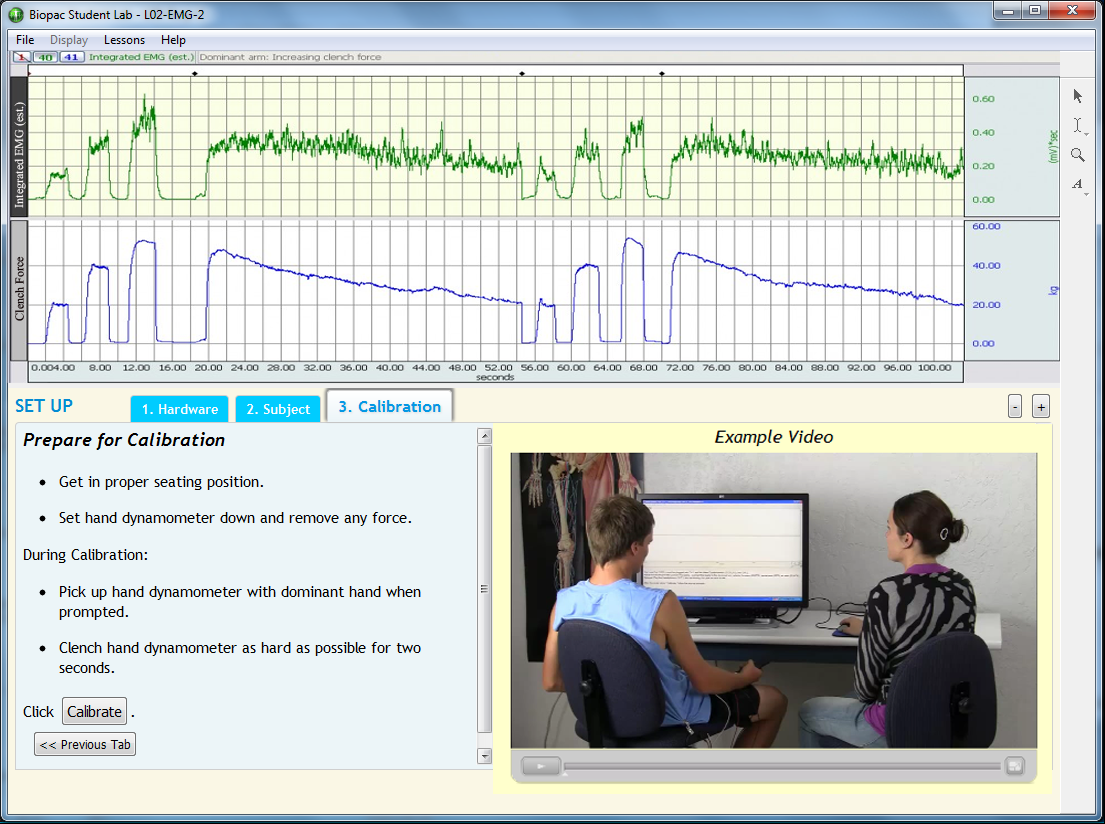L02 Electromyography II

BSL EMG lesson II explores the role of skeletal muscle in performing mechanical tasks. The lesson uses a hand dynamometer to demonstrate the use of skeletal muscle when recording the maximum grip strength for both hands and also allows students to record EMG while inducing muscle fatigue. The system will automatically calibrate the hand dynamometer and scale the force values to kilograms for the electromyogram. Students will see the level of motor unit recruitment associated with the precise amount of applied force.
Experimental Objectives
- To determine the maximum grip strength for the right versus the left hands and compare the differences between male and female.
- To observe, record and correlate motor unit recruitment with the increased power of skeletal muscle contraction.
- To record the force produced by grip muscles, EMG, and integrated EMG when inducing fatigue.
Tasks Performed by the Student
BSL Lessons are designed to allow at least four students to record and save data in a normal lab period (60-90 minutes). Typically, labs work most efficiently with three or more students working together at each BSL station.
- Record forearm EMG.
- Squeeze the hand dynamometer four times, starting with a light squeeze and ending with the maximum (dominant arm).
- Repeat the sequence for the non-dominant arm.
- Squeeze the hand dynamometer with the maximum clench force (dominant arm) and try to maintain it.
- Repeat the sequence for the non-dominant arm.
Videos
BSL L02 Cal SS25L
BSL L02 Cal SS25LA
Biopac Student Lab Student Download
Lesson Hardware
This lesson requires a Biopac Student Lab (BSL) System and the following hardware. If your BSL System does not include all hardware items, expand your system by selecting required items below. For more details, review the Lesson: L# BSL Lessons - see the Lab Manual or launch BSL; A# and H# BSL PRO Lessons, click the PDF link above to review full setup, recording, and analysis procedures.
Stay Connected